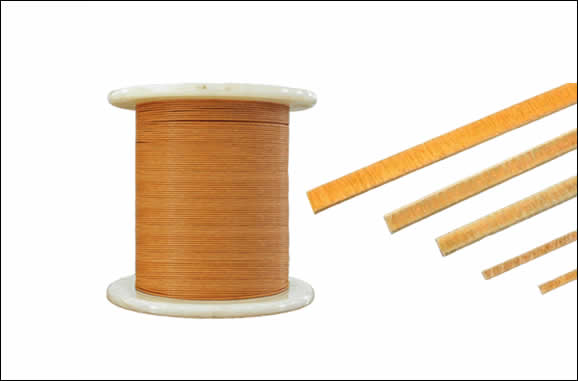Welcome to Our Website
Fiberglass covered copper wire, also known as magnet wire, is a type of electrical wire that combines the excellent electrical conductivity of copper with the superior insulation properties of fiberglass. This insulating material is moisture and chemical resistant. Its common applications are heat treatment, glass and ceramic furnaces, foundries, and a wide range of applications in aluminium processing.
Classification and Specifications:
Fiberglass covered copper wire is typically classified based on its temperature rating and insulation type. The temperature rating indicates the maximum operating temperature at which the wire can perform reliably. Common temperature ratings include Class 130 (130°C), Class 155 (155°C), and Class 180 (180°C).
The insulation type can vary, and different insulation materials offer specific properties suitable for diverse applications. Common insulation materials used for fiberglass covered copper wire include polyurethane (PU), polyamide-imide (PAI), and polyesterimide (PEI).
Chemical Composition and Tensile Strength:
The core conductor of fiberglass covered copper wire is made of high-quality copper, known for its excellent electrical conductivity. The copper conductor provides low resistance, enabling efficient electrical transmission.
The insulation material, usually fiberglass, is composed of finely woven glass fibers. These fibers are impregnated with an insulating resin to enhance the wire's mechanical and electrical properties. The resin used in the insulation is typically a thermosetting material, which provides excellent thermal stability and resistance to aging.
The tensile strength of fiberglass covered copper wire varies depending on the wire diameter and insulation thickness. Generally, it exhibits high tensile strength, allowing for reliable and durable installations.

FiberGlass Covered Copper Wire
Diameter Range (mm): Round:
The diameter range of fiberglass-covered round copper wire can vary depending on the specific application and industry standards.
Fine Gauge Wire: Typically, the diameter ranges from 0.05 mm to 1.00 mm (50 µm to 1000 µm).
Medium Gauge Wire: The diameter ranges from 1.00 mm to 3.00 mm (1000 µm to 3000 µm).
Heavy Gauge Wire: The diameter ranges from 3.00 mm to 8.00 mm (3000 µm to 8000 µm).
Range of Fiberglass-covered flat copper wire.
Fine Gauge Wire: Typically, the thickness ranges from 0.05 mm to 1.00 mm (50 µm to 1000 µm), and the width can vary from a few millimeters to several centimeters.
Medium Gauge Wire: The thickness ranges from 1.00 mm to 3.00 mm (1000 µm to 3000 µm), and the width can vary accordingly.
Heavy Gauge Wire: The thickness ranges from 3.00 mm to 8.00 mm (3000 µm to 8000 µm), and the width can vary accordingly.
Thermal Class: 155 C, 180 C
Standard: IEC, NEMA, GB, JIS
Package: 30kg/50kg/150kg wooden spool or according to customers requirements.
Roll Size, Range of Weights, and Wire Diameters:
Fiberglass covered copper wire is commonly supplied in spools or reels. The roll size may vary depending on the wire diameter, weight, and customer requirements. Smaller rolls are suitable for lightweight applications, while larger rolls are used for heavy-duty and industrial applications.
The range of weights available for fiberglass covered copper wire can vary from a few grams to several kilograms per roll, depending on the wire diameter and length.
The wire diameters of fiberglass covered copper wire can range from ultra-fine gauges, such as 40 AWG (American Wire Gauge), to thicker gauges, such as 4 AWG. The choice of wire diameter depends on the specific application requirements, including current-carrying capacity, space constraints, and electrical properties.
Anti-Magnetic Properties:
Fiberglass covered copper wire exhibits excellent anti-magnetic properties, making it suitable for applications where minimizing electromagnetic interference (EMI) is crucial. The insulation material provides a high level of electrical isolation, reducing the chances of cross-talk and signal interference.